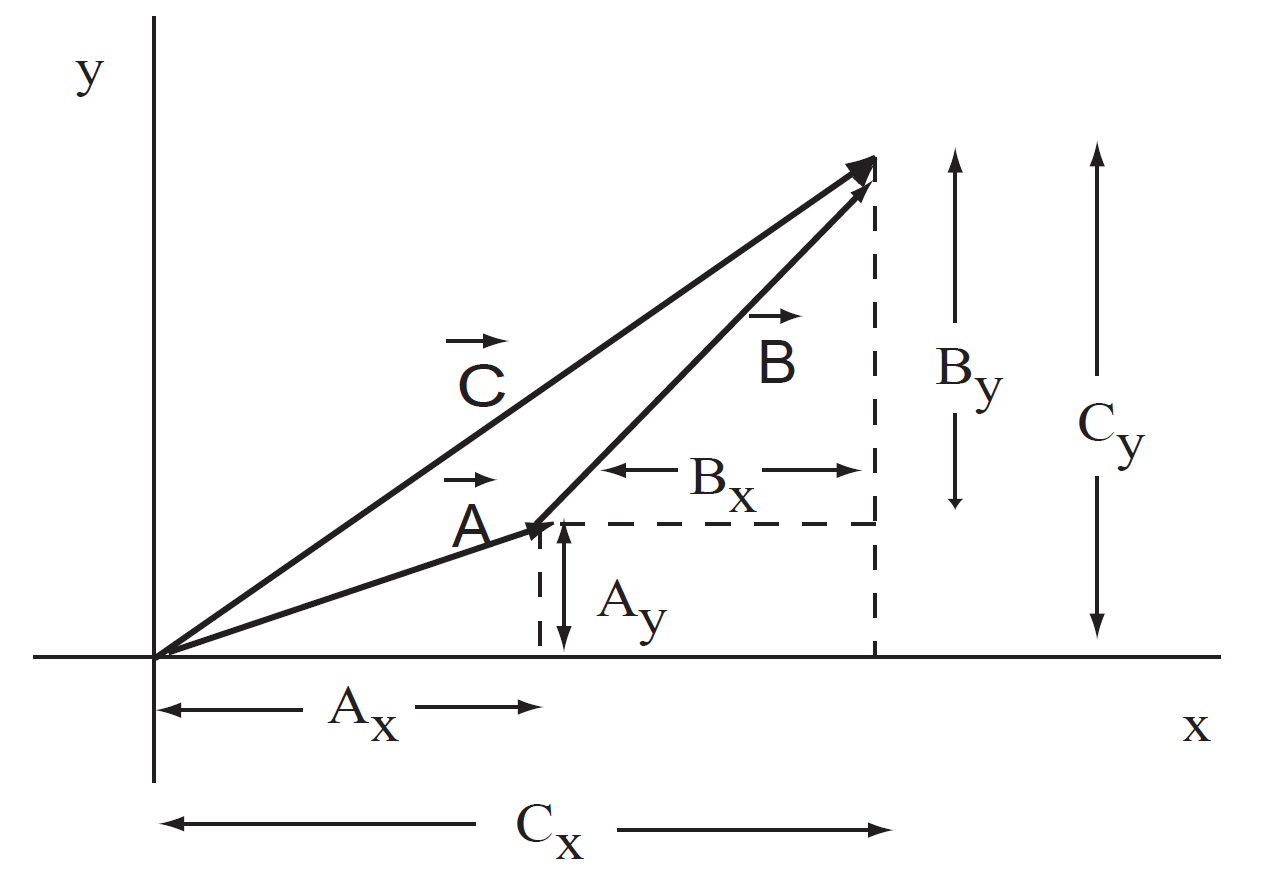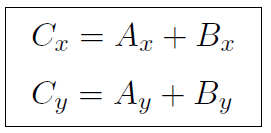


 الفيزياء الكلاسيكية
الفيزياء الكلاسيكية
 الكهربائية والمغناطيسية
الكهربائية والمغناطيسية
 علم البصريات
علم البصريات
 الفيزياء الحديثة
الفيزياء الحديثة
 النظرية النسبية
النظرية النسبية
 الفيزياء النووية
الفيزياء النووية
 فيزياء الحالة الصلبة
فيزياء الحالة الصلبة
 الليزر
الليزر
 علم الفلك
علم الفلك
 المجموعة الشمسية
المجموعة الشمسية
 الطاقة البديلة
الطاقة البديلة
 الفيزياء والعلوم الأخرى
الفيزياء والعلوم الأخرى
 مواضيع عامة في الفيزياء
مواضيع عامة في الفيزياء|
Read More
Date: 29-12-2020
Date: 8-12-2016
Date: 18-11-2020
|
Adding Vectors by Components
Finally we will now see the use of components and unit vectors. Remember how we discussed adding vectors graphically using a ruler and protractor. A better method is with the use of components, because then we can get our answers by pure calculation. In Fig. 1.1 we have shown two vectors  and
and  added to form
added to form  , but we have also indicated all the components.
, but we have also indicated all the components.

FIGURE 1.1 Adding vectors by components.
By carefully looking at the figure you can see that

This is a very important result. Now let's back-track for a minute. When we write

you should say, ''Wait a minute! What does the + sign mean?" We are used to adding numbers such as 5 = 3 + 2, but in the above equation  ,
,  and
and  are not numbers. They are these strange arrow-like objects called vectors which are ''add" by putting head-to-tail. We should really write
are not numbers. They are these strange arrow-like objects called vectors which are ''add" by putting head-to-tail. We should really write

where  is a new type of ''addition", totally unlike adding numbers. However Ax, Bx, Ay, By, Cx, Cy are ordinary numbers and the + sign we used above does denote ordinary addition. Thus
is a new type of ''addition", totally unlike adding numbers. However Ax, Bx, Ay, By, Cx, Cy are ordinary numbers and the + sign we used above does denote ordinary addition. Thus  actually means Cx = Ax + Bx and Cy = Ay + By. The statement
actually means Cx = Ax + Bx and Cy = Ay + By. The statement  is really shorthand for two ordinary addition statements. Whenever anyone writes something like
is really shorthand for two ordinary addition statements. Whenever anyone writes something like  it actually means two things, namely Dx = Fx+ Ex and Dy = Fy + Ey. All of this is much more obvious with the use of unit vectors. Write
it actually means two things, namely Dx = Fx+ Ex and Dy = Fy + Ey. All of this is much more obvious with the use of unit vectors. Write  and
and  and
and  . Now
. Now

is simply

and equating coefficients of  and
and  gives
gives

and




|
|
|
|
لخفض ضغط الدم.. دراسة تحدد "تمارين مهمة"
|
|
|
|
|
|
|
طال انتظارها.. ميزة جديدة من "واتساب" تعزز الخصوصية
|
|
|
|
|
|
|
مشاتل الكفيل تزيّن مجمّع أبي الفضل العبّاس (عليه السلام) بالورد استعدادًا لحفل التخرج المركزي
|
|
|